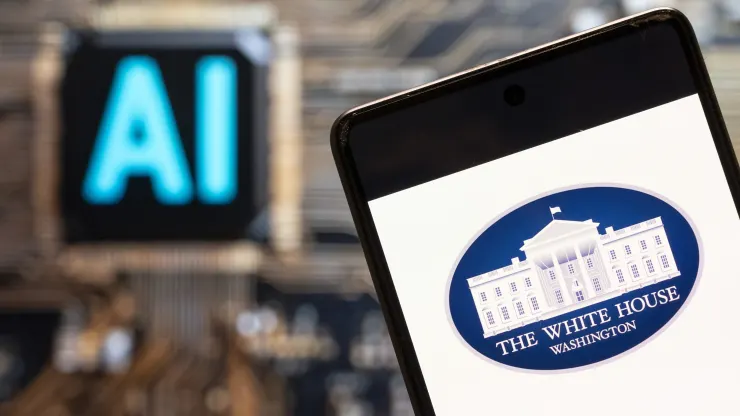
Amid President Joe Biden’s executive order prioritizing “safe, secure, and trustworthy” artificial intelligence, the regulatory landscape governing AI might lag behind. As AI continues advancing, it’s gradually permeating the spheres of government and politics.
Approaching the 2024 presidential election, AI emerges as an active participant in various aspects, predominantly within government agencies, candidates’ operations, and elected officials’ functions. While AI holds potential to sway election outcomes, the public’s skepticism toward politicians and the absence of AI regulations will likely keep these technological integrations discreetly integrated, experts suggest.
What will AI-assisted elections look like in the coming year and beyond?
Kevin Pérez-Allen, the chief communications officer at United States of Care, a nonpartisan healthcare advocacy group, anticipates AI aiding in analyzing voting patterns, shaping campaign messages, and dissecting social media behaviors.
Pérez-Allen, with extensive experience in political campaign communication, notes the evolving campaign tactics driven by technology. For instance, ChatGPT is already generating initial drafts for speeches, campaign materials, and even used in fundraising emails and texts, he mentioned.
While AI excels in tasks like information gathering, data analysis, and content creation, Pérez-Allen highlights its limitations in replicating direct voter engagement and ground-level interaction within districts.
The efficiency AI brings might reshape campaign structures, potentially reducing the need for expansive campaign staff, Pérez-Allen added.
Campaigning with Deepfakes
Sinclair Schuller, co-founder and managing partner at Nuvalence, an AI implementation firm specializing in government integration, underscores the risks AI introduces to the electoral landscape. “We’ll witness a surge in fabricated content supporting or opposing candidates,” Schuller expressed, foreseeing resultant widespread confusion.
Schuller specifically alludes to deepfakes, encompassing AI-generated video, imagery, and audio portraying events that never transpired. He highlights the rapid nature of political campaigns, often driven by the notion of “whoever voices it first leaves a lasting impact,” suggesting that political agents and fringe supporters might easily craft and circulate deepfakes depicting adversaries in compromising scenarios.
This tactic, Schuller notes, is already pervasive, spanning from presidential campaigns down to local electoral contests.
During the February 2023 mayoral primary election in Chicago, a doctored video emerged featuring candidate Paul Vallas seemingly endorsing police brutality. Despite the video surfacing, Vallas lost the race, but it remains uncertain how significant an impact the video had.
Schuller articulated a hope for a future where only authenticated, directly traced sources are deemed trustworthy. He emphasized the ongoing battle between falsified content and detection mechanisms, predicting an escalation in this conflict. According to Schuller, using AI for real-time identification and tagging of AI-generated content surpasses post hoc fact-checking methods, as it allows intervention during content publication, preventing early dissemination and acceptance of misleading information.
Meta recently updated its guidelines concerning advertisements during election periods.
Eric Schmidt, former Google CEO and co-founder of Schmidt Futures, expressed concerns about social media’s inadequacy in shielding users from fabricated AI content, foreseeing challenges in the upcoming 2024 elections.
Even Pérez-Allen, optimistic about AI integration in the election process, acknowledges the prevailing reality. He noted the use of allegations to sway opinions in ongoing global conflicts and anticipates an increase in such manipulative communications leading up to the 2024 elections.
The Potential Positivity of AI in Politics.
The integration of AI into the political landscape could offer a positive trajectory, provided regulations permit such advancement.
Pérez-Allen addresses the recurring narrative of lumping voter blocs together every election cycle. He highlights the tendency to categorize Latinos, Black voters, and suburban women into singular monoliths, assuming uniformity in their perspectives.
The potential of AI lies in its ability to create hyper-localized, highly personalized political campaigns, potentially dismantling this narrative.
Moreover, it could enhance information accessibility. Pérez-Allen envisions AI-powered chatbots embedded within campaign platforms, offering data-driven responses akin to a direct line to the campaign, moving beyond static policy positions listed on websites.
He emphasizes the potential for diverse communities, like Latinos, to receive campaign messages in their native languages and dialects. AI’s role could extend to in-booth translation and transcreation, considering nuanced messaging in translations, rather than solely focusing on word accuracy.
However, the realization of these possibilities hinges on regulation. While Biden’s executive order made headlines, the path to implementation remains unclear.
Jordan Burris, vice president of public sector strategy at Socure, an identity verification platform, and a board member at the Identity Theft Resource Center, weighs in on this. Burris suggests that while the directive outlines ambitious goals, the true challenge lies in execution, emphasizing the need for a change in budget allocation, cultural adaptation, and operational practices for effective implementation.
When it comes to Congress addressing technology concerns, Pérez-Allen points to their inactivity on social media regulation, citing Section 230 of the Communications Decency Act of 1996 as the most recent social media regulation.
Former Texas congressman Will Hurd, who previously outlined an AI policy plan during his 2024 campaign, has exited the presidential race. Pérez-Allen doubts that any remaining presidential candidates will delve into this topic publicly unless prompted by a substantial AI-related crisis.
Despite the existence of mail-in voting for decades, Pérez-Allen warns that integrating AI into current election processes could trigger a significant crisis, considering recent criticisms of mail-in voting.
Government agencies have begun employing chatbots to handle basic inquiries. Julie Su, Biden’s Acting Secretary of Labor, highlighted the Department of Labor’s cautious use of AI to streamline certain tasks, like benefits claims verification, ensuring it doesn’t displace workers.
Looking ahead, Schuller predicts the integration of chatbots with systems of record within the next one to two years, enabling agencies to utilize AI for complex tasks, including fraud detection in license applications, expanding beyond just language interpretation to handling visual data for better query guidance.
With the 2024 election approaching, AI’s role may reshape factors like accessibility, personalization, and sourcing reliable information.